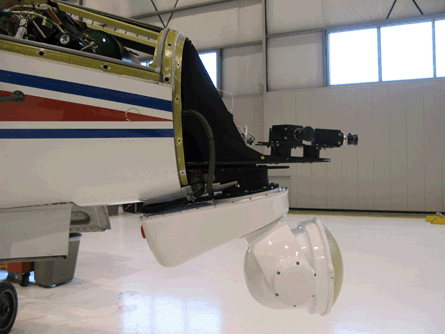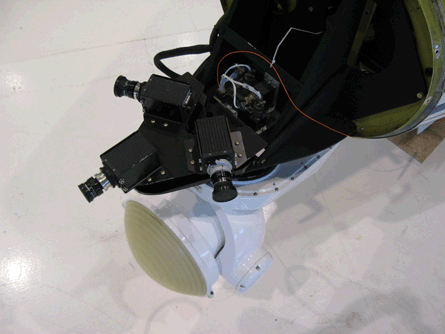A slate of technologies being readied for flight and ground testing by military and civilian agencies could accelerate the integration of larger manned and unmanned aircraft in US skies through advanced strategic operations and comprehensive tactical awareness.
Tackling the tactical problem of see and avoid are airborne tests expected to begin on 21 August in Niagara Falls, New York. These will analyse new sense and avoid algorithms designed to help the Northrop Grumman Global Hawk, and potentially other large unmanned aircraft systems, fly in civil airspace.
 |
|---|
Calspan Learjet with optical and radar systems |
Engineers are installing in a Calspan Bombardier Learjet 25 new Northrop Grumman-built computers with upgraded DRA optics and processors. The aircraft has been tuned to fly like a Global Hawk during tests in which sense and avoid algorithms determine actions required to deal with "intruder" aircraft.
Along with the three optical sensors, the Learjet 25 will carry an ICx-built air-to-air radar under the nose, plus a traffic and collision avoidance system (TCAS II) and Federal Aviation Administration-supplied automatic dependent surveillance - broadcast system.
Under contract to Northrop, Calspan last year tested earlier versions of the hardware and software that generated avoidance routines carried out by the Global Hawk surrogate pilots. During seven flights later this month, using another Calspan Learjet as the intruder, and then during seven flights in September using two FAA-owned aircraft as intruders, the Global Hawk surrogate will autonomously perform avoidance manoeuvres for the first time.
Before the contract ends next year, Calspan will fly the new air-to-air radar selected for the Global Hawk, built by Colorado Engineering.
In Maryland, GE Aviation will shortly begin working on a strategic flight trajectory programme designed to integrate unmanned air systems into the air traffic control system. The results could help reduce required crew on future airline and cargo operations.
Under a co-operative research programme with the FAA, UAV-builder AAI and others, GE will modify its next generation flight management system (FMS) to perform co-operative four-dimensional flight trajectory negotiations between aircraft, aircraft ground stations and air traffic control. The intent of the programme is to make the type of aircraft, whether manned or unmanned, transparent with respect to air traffic control.
 |
|---|
Calspan Learjet with optical and radar systems |
GE engineers plan to begin installing a modified FMS into Maryland-based AAI's laboratory next week for simulations. The system later this year will be tested in the FAA's airspace simulation facility, with the results to be validated in live tests with a US Army-donated Shadow UAS next year.
Source: Flight International























